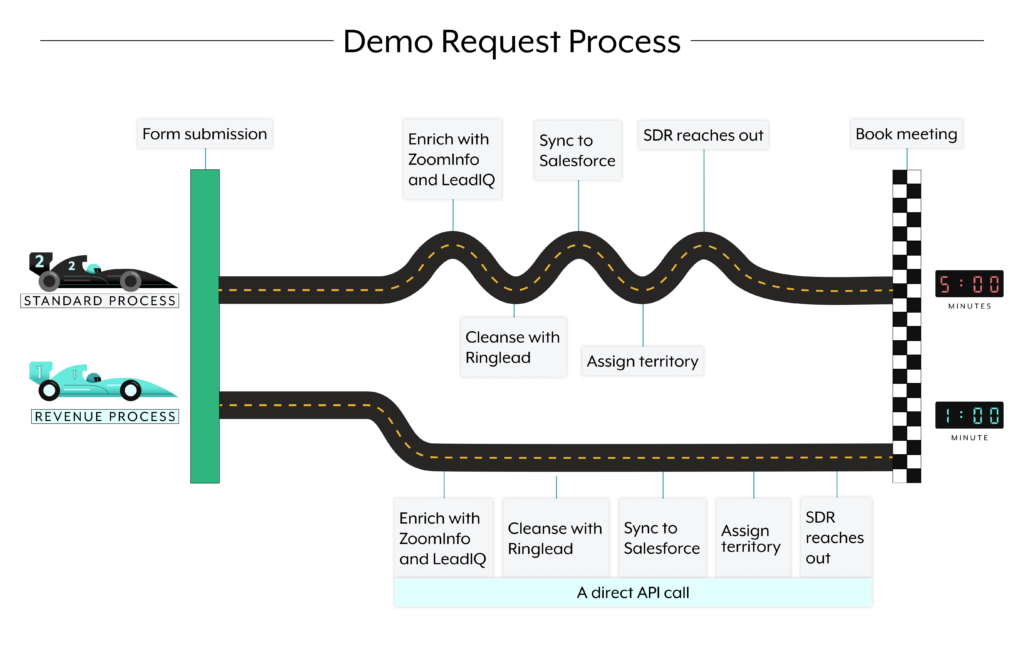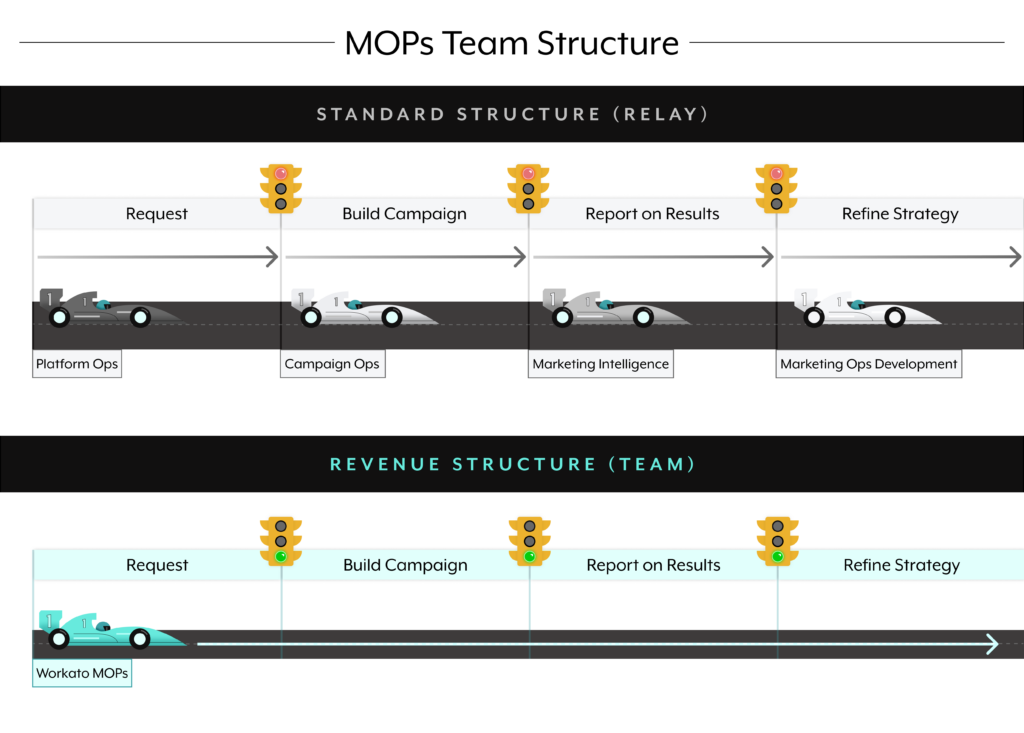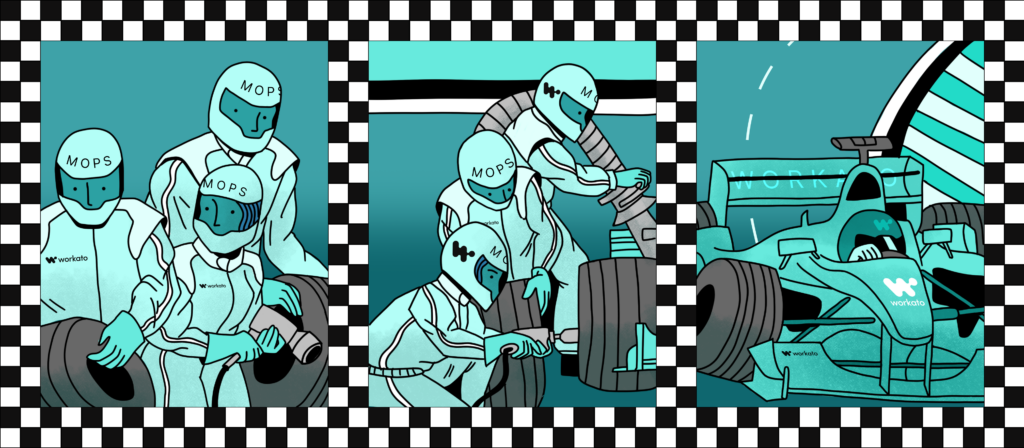The marketing operations (or “MOps”) team is the technical muscle behind your company’s marketing campaigns, but it’s also your untapped revenue engine. At Workato, the MOPs team applies a revenue-driven approach to day-to-day operations—here’s why and how we do it.
The traditional scope of the MOps Team
At most companies, MOps is a group of marketing technology specialists who have the technical expertise to support business functions across the marketing department. They are:
- Admins of the martech stack
- The marketing intelligence resource
- Managing campaign ops
- Measuring outcomes and analytics
The MOps team is critical to the everyday success of the marketing department, but unlike the teams they support, MOps folks don’t typically tie their work to revenue outcomes. As a result, they can be pigeonholed into limited roles, which means they might be excluded from strategic discussions and looped into marketing campaigns only when they’re ready to ship.
Using MOps to increase revenue and pipeline
But I believe MOps has huge, untapped potential as a revenue engine since, technically, it’s closer to revenue and pipeline than any other marketing team. MOps folks are the ones who set up the models the entire department depends on to measure their most important metrics. They’re the ones who know what goes into these models, how they work, and what comes out.
Only MOps has access to:
- The entire martech stack
- Every team’s data
- All marketing processes
At Workato, the MOps team spends a lot of its time on strategic initiatives, not just ticket resolution. It meets regularly with revenue teams to review pipeline and revenue pacing, make operational changes to improve efficiency, and fast-track certain processes with automation.
Automation is a huge part of MOps’ strategic role—and the “MOps mafia’s” secret weapon. The team leverages the Workato platform to build thousands of revenue automations.
Take lead routing, for example. Harvard Business Review research shows that companies that reply to an inbound demo request within 5 minutes are 10x more likely to book a meeting with a buyer. That number makes sense in my experience—if I’m looking for solutions and submit a handful of demo requests, I’m most likely to take a meeting with the first vendor who replies.
The problem is—many companies, including Workato as recently as a few years ago, need time to research and route every lead. At a high level Workato’s process looked like:
- A lead submits a multi-step Marketo form
- We enrich the lead in ZoomInfo and LeadIQ
- We dedupe and standardize the entry in Ringlead
- Marketo syncs the lead to Salesforce
- An SDR receives the lead and assigns the territory manually
- The regional SDR finally reaches out to the lead in Outreach
As you can probably guess—77% of the time, this process took Workato more than 5 minutes. I knew we could do better. Then I was asked the question “How can we increase pipeline by increasing conversion rate vs. increasing spend?” I was certain MOps had an answer.
The team used Workato to automate a new demo request process. This is what it looks like in a nutshell:
- A lead submits a streamlined Marketo form
- A direct API call to ZoomInfo and LeadIQ qualifies the lead
- Those who pre-qualify are routed by territory
- They’re synced to Salesforce
- Chili Piper prompts them to book directly with an SDR
- They’re added to an Outreach nurture sequence
- Those who don’t are asked to provide additional information
- They’re synced to Salesforce
- They’re sent to an SDR for review
- They’re added to an Outreach nurture sequence
- Those who pre-qualify are routed by territory
Additionally, MOps connected Salesforce, Marketo, Slack, Demandbase, Intercom, Snowflake, ZoomInfo, ChiliPiper, and many more applications to give SDRs a 360-degree view of every new lead. By taking a revenue-driven approach and winning the trust of revenue stakeholders, we can now take action on all of our demo requests within 5 minutes. (If you want, you can test that out here.)
Here’s an illustration of how the new process differs from the old:

Another example of revenue-focused automation built by MOps? This account timeline automation visualizes the buyer’s journey. To build and run this type of automation, MOps needs to have a revenue-driven mindset that’s motivated by impact as much as implementation.
MOps team structure
At most companies, the MOps team is a group of specialized professionals who each focus on a specific portion of the tech stack or are experts in one the “four pillars” of marketing operations: platform ops, campaign ops, marketing intelligence, or marketing ops development. These specialized teams need to be relatively large—say 20 people for a 1,000-person company.
Workato takes a different approach. Instead of hiring specialists and senior roles to manage those pillars, our swimlanes are the teams we support within the marketing department. For example, we have one person each dedicated to supporting demand gen, events, and other marketing teams, managing all of those teams’ reporting, campaign operations, lead routing, or analytics. Here’s an illustration of how a revenue structure differs from a standard structure:

Through this structure, we develop and form special relationships with the stakeholders we support, which grows trust and increases efficiency. Not only are there fewer handoffs compared to the standard structure, it allows everyone on the team to become a jack of all trades, which ultimately promotes better career growth and prevents blockers when we take time off.
The impact of a revenue-driven philosophy
A few things have changed at Workato since MOps started thinking from a revenue perspective. One is the level of collaboration between MOps and marketing leaders. Another important one is the level of automation and time it takes to route leads to sales. And a third—pipeline! MOps has successfully supported a 2X increase in marketing pipeline at Workato in the last few years.
